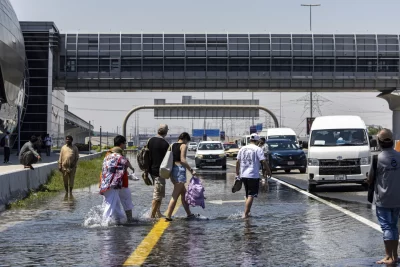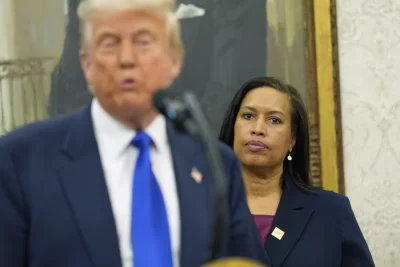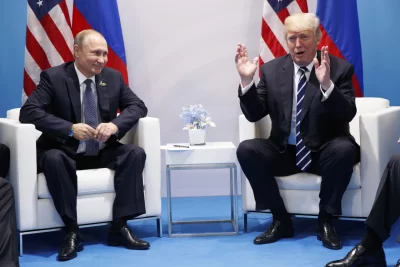
LONDON, Ohio— Within 24 hours of buying his red Ford Mustang Mach-E, Liam Sawyer set off on a camping trip.
Sawyer, who bought the electric SUV “because I think the technology is cool and the range is just long enough,” searched ahead of time for convenient charging stations between his home in Indianapolis and Allegheny National Forest in western Pennsylvania.
About 175 miles (282 kilometers) into his journey, he stopped at a new public charging station at the Pilot Travel Center along Interstate 70 outside Columbus, Ohio. The station, which opened in London, Ohio, in December with four chargers, can power an EV in about half an hour while drivers buy food and drinks and use amenities.
The Ohio charging station was created from the $5 billion National Electric Vehicle Infrastructure program, part of the bipartisan infrastructure bill President Joe Biden signed into law in November 2021. More than two years later, only four states — Ohio, New York, Pennsylvania and Hawaii — have opened stations funded by the program.
Biden, a Democrat, has set a goal of creating a national network of 500,000 publicly available chargers by 2030. Easily accessible charging ports are a key part of his effort to encourage drivers to move away from gasoline-powered cars and trucks that contribute to global warming
EVs hit a record 1.19 million in sales in the U.S. last year and accounted for 7.6% of the total U.S. vehicle market, up from 5.8% in 2022. Transportation emissions are the nation’s largest source of greenhouse gases.
The Biden administration says the federal charging program is on track. Several states, including Maine, Vermont and Colorado, are expected to open public charging stations later this year, while more than a dozen others have awarded contracts for projects or broken ground.
“We are building this national framework from scratch, partnering with states to set plans, and we want to make sure we are taking appropriate care to set this program up correctly,″ Federal Highway Administrator Shailen Bhatt said in an interview.
“The first two years were about getting the rules right, getting the plans in place,” Bhatt said. “And now what you’re going to see is this year being about the chargers coming online.”
As part of the national charging station rollout, the Biden administration awarded $623 million in grants to states, local governments and tribes in January. The grants will fund 47 EV charging stations and related projects in 22 states and Puerto Rico, including 7,500 charging ports.
Separately, Walmart and other private companies have pledged to build a network of affordable fast-charging stations for EVs. The federal program is also expected to serve as a catalyst for other projects.
“We’re committed to making sure that all Americans can charge (their EVs) where they live, work, shop, play, pray,″ said Gabe Klein, director of the Joint Office of Energy and Transportation, which runs the federal charging program.
But even some of the government’s own experts say 500,000 public chargers won’t be enough to meet Biden’s ambitious climate goals. The Department of Energy’s National Renewable Energy Laboratory estimated last year that the U.S. will need 1.2 million public chargers by 2030, a huge jump from the 175,00 public charging ports now available, as measured by the Alternative Fuels Data Center, a division of the Energy Department.
Driving range anxiety is still an impediment, along with cost. About 80% of respondents cited concerns about a lack of charging stations as a reason not to buy an electric vehicle, according to a 2023 survey from The Associated Press-NORC Center for Public Affairs Research and the Energy Policy Institute at the University of Chicago.







